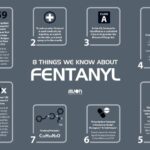Ketamine: Uses, Side Effects, Abuse

What is Ketamine?
Ketamine is a dissociative injected anesthetic that has been available by prescription in the U.S. since the 1970s for human and veterinary uses. Esketamine (Spravato), the S-enantiomer of racemic ketamine, was approved in 2019 for treatment-resistant depression and is approved for use in depressed patients with acute suicidal ideation or behavior. Ketaset is the brand name of a surgical anesthesia used by veterinarians
Dissociative drugs can lead to distortion of sights, colors, sounds, self, and one’s environment. Ketamine is available in a clear liquid or off-white powder form for intravenous injection or as a nasal spray. Examples of other dissociative drugs include phencyclidine (PCP) and dextromethorphan (DXM).
In the U.S., ketamine is classified as a schedule III drug under the DEA Controlled Substances Act; however, it is not classified as an opioid (narcotic) or barbiturate.
Why is Ketamine Used Medically?
Ketamine can provide pain relief and short-term memory loss (for example, amnesia of a medical procedure). In surgery, it is used as an induction and maintenance agent for sedation and to provide general anesthesia. It has also been used for pain control in burn therapy, battlefield injuries, and in children who cannot use other anesthetics due to side effects or allergies.
Ketamine, through blocking at the N-methyl-D-aspartate (NMDA) site, has rapid action in controlling symptoms of depression and acute suicidal ideation.
At normal doses, it is often preferred as an anesthetic in patients at risk of bronchospasm and respiratory depression.
How is Ketamine Abused?
In addition to its legal, medical uses, ketamine and synthesized analogs have become drugs of abuse with hallucinogenic properties. It has also been used as a “date rape” drug.
When abused, it is typically insufflated (“snorted” up the nose) in social situations. It is also injected, consumed orally as a liquid, or smoked in marijuana or tobacco. It is frequently abused in combination with other substances, such as cocaine or amphetamines. Use with multiple drugs has been fatal.
When misused, it is often sourced via the illegal diversion of prescription products, but analogs may be found on the streets.
How Quickly Does Ketamine Work?
An injection yields a quick response, with effects occurring in seconds to minutes.
“Snorting” leads to effects in roughly 5 to 15 minutes (this is the most common method of abuse).
Oral consumption requires between 5 and 30 minutes.
The effects of abuse typically last 1 to 2 hours, but the users judgement, senses and coordination may be affected for up to 24 hours or longer. Sensations the user may seek include floating, stimulation and visual effects.
High doses may dangerously reduce breathing, lead to muscle spasms or weakness, dizziness, balance difficulty, impaired vision, slurred speech, nausea and vomiting, and severe confusion.
Abuse of large doses can also lead to powerful visual hallucinations that are intensified by environmental stimuli. Coma and deep unconsciousness can occur. When higher doses of ketamine are abused, or during emergence, it is reported to produce vivid dreams and an “out-of-body”, “K-hole” or “near-death” hallucinogenic experience, often reported as terrifying (similar to bad LSD trip).
In smaller doses, such as those typically used recreationally, ketamine can lead to various effects such as:
- feelings of calmness and relaxation, relief from pain
- depressed mental state
- dizziness
- detached feeling from body
- slurred speech
- diminished reflexes
- hallucinations lasting from 30 to 60 minutes
- nystagmus (repetitive, uncontrolled movements of the eyes).
Ketamine Safety Information
Abuse of ketamine can be linked with short-term and long-term problems:
Short-term: Problems with attention, learning, and memory; dreamlike states, hallucinations; sedation; confusion; loss of memory; raised blood pressure; unconsciousness; dangerously slowed breathing.
Long-term: Ulcers and pain in the bladder; kidney problems; stomach pain; depression; poor memory.
The most common side effects associated with ketamine when used medically are nausea, vomiting, dizziness, diplopia (double vision), drowsiness, dysphoria (unease, restlessness), and confusion. There is also the risk of HIV, hepatitis, and other infectious diseases from shared needles.
Ketamine use can be fatal in people who are alcoholics or acutely intoxicated with alcohol. There are animal reports of an increased risk of toxicity when ketamine is combined with caffeine. Theoretically, this may be a concern in people who have consumed energy drinks, often done at nightclubs where ketamine may be abused.
The intensity of side effects are related to the dose of the drug concentration. Ketamine is a medication primarily used for starting and maintaining anesthesia. It induces dissociative anesthesia, a trance-like state providing pain relief, sedation, and amnesia.




